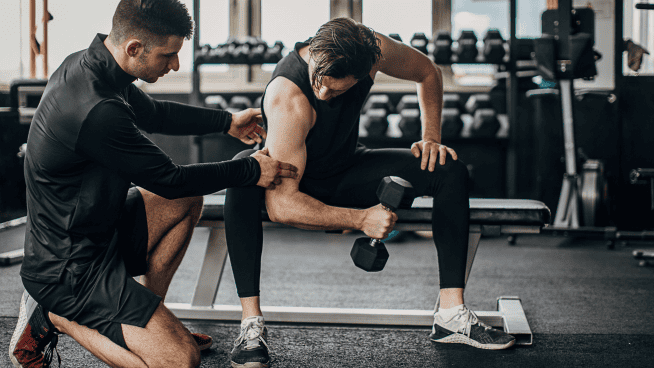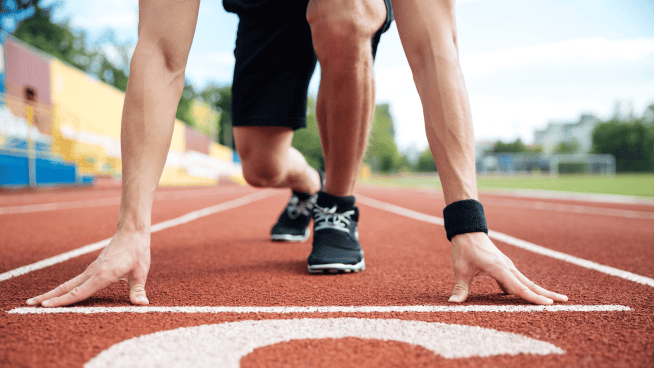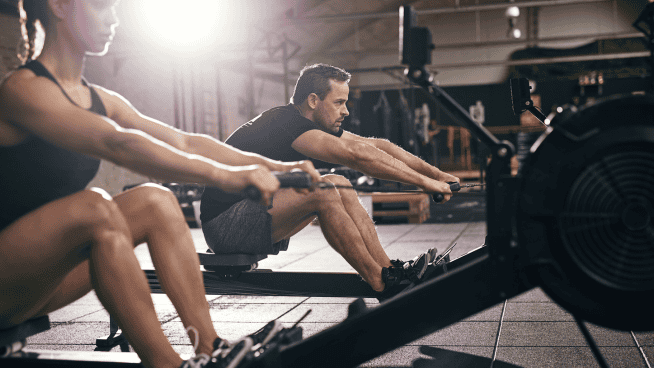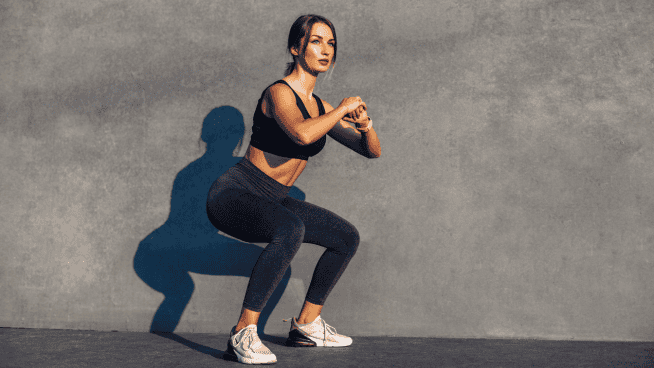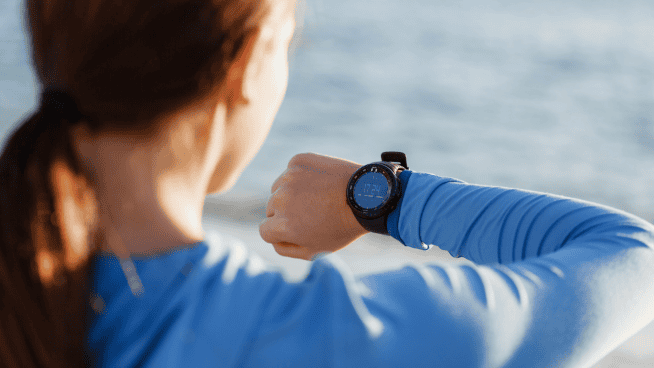Sumo Deadlift for Football Strength
Although the Squat is undoubtedly the king of lifts for building the lower-body strength needed to excel on the football field, the Deadlift is another integral piece of the strength and conditioning puzzle. Conventional Deadlifts, where the feet are shoulder-width apart and the hands are placed outside the legs, tend to rule the weight room. There is nothing inherently wrong with this type of exercise, but the Sumo Deadlift is a safer and better way to build the muscles needed for football.
RELATED: Master the Deadlift, Part 2: The Sumo Deadlift
Hip Strength and Mobility
The most noticeable difference between Sumo and conventional Deadlifts is the amount of stress you feel in the hips. You must open the hips, flare the toes and drive the knees outward, all of which requires a great deal of hip mobility to get into the proper position. Hip mobility is important because of its role in proficient running, turning and cutting. Tight hips will prevent you from being a better, healthier athlete.
Offensive linemen can greatly benefit from the Sumo Deadlift because of its applicability to their role on the football field. It requires you to pull with your hips low, while maintaining a strong wide stance and an upright torso. This creates a strong base when you perform power steps and other pass-blocking moves on the field.
Stronger Quads and Tibialis Anterior
A recent study showed that the Sumo Deadlift elicits more activation of the quadriceps and tibialis anterior (the muscles on the front of the shins) than the conventional Deadlift. Quad strength is vital in facilitating sprint speed and helping to prevent knee injuries. The tibialis anterior muscle is small compared to the quads, but it’s very important in dorsiflexing (pointing the toes up toward the shin), which translates to stronger knee punch and helps with burst off the line and acceleration through tackles.
Performimg the Sumo Deadlift
- Stand with your legs wider than shoulder-width and your toes pointed out about 45 degrees. The width of the stance depends on the individual, but I like to position my feet so my shins are vertical when I initiate the pull.
- Place your hands shoulder-width apart.
- Keep your back tight by pinching your shoulder blades together, and keep a tight grip on the bar.
- Lift the bar. Once it passes your knees, lock out your legs and push your hips forward, engaging your glutes.
References
- Escamilla RF, Francisco AC, Kayes AV, Speer KP, Moorman CT (2002) “An electromyographic analysis of sumo and conventional style deadlifts.” Med Sci Sports Exec 34(4):682-8.
- Escamilla RF, Francisco AC, Fleisig GS, Barrentine SW, et al. (2000) “A three-dimensional bio-mechanical analysis of sumo and conventional style deadlifts.” Med Sci Sports Exerc 32(7):1265-75.
- Harris-Hayes M, Sahrmann SA, Van Dillen LR (2009) “Relationship between hip and low back pain in athletes who participate in rotation-related sports.” J Sport Rehabil 18(1):60-75.
- Sakai N, Luo ZP, Rand JA, An KN (2000) “The influence of weakness in the vastus medialis oblique muscle on the patella femoral joint: an in virto biomechanical study.” Clinical Biomechanics 15(5):335-9
RECOMMENDED FOR YOU
MOST POPULAR
Sumo Deadlift for Football Strength
Although the Squat is undoubtedly the king of lifts for building the lower-body strength needed to excel on the football field, the Deadlift is another integral piece of the strength and conditioning puzzle. Conventional Deadlifts, where the feet are shoulder-width apart and the hands are placed outside the legs, tend to rule the weight room. There is nothing inherently wrong with this type of exercise, but the Sumo Deadlift is a safer and better way to build the muscles needed for football.
RELATED: Master the Deadlift, Part 2: The Sumo Deadlift
Hip Strength and Mobility
The most noticeable difference between Sumo and conventional Deadlifts is the amount of stress you feel in the hips. You must open the hips, flare the toes and drive the knees outward, all of which requires a great deal of hip mobility to get into the proper position. Hip mobility is important because of its role in proficient running, turning and cutting. Tight hips will prevent you from being a better, healthier athlete.
Offensive linemen can greatly benefit from the Sumo Deadlift because of its applicability to their role on the football field. It requires you to pull with your hips low, while maintaining a strong wide stance and an upright torso. This creates a strong base when you perform power steps and other pass-blocking moves on the field.
Stronger Quads and Tibialis Anterior
A recent study showed that the Sumo Deadlift elicits more activation of the quadriceps and tibialis anterior (the muscles on the front of the shins) than the conventional Deadlift. Quad strength is vital in facilitating sprint speed and helping to prevent knee injuries. The tibialis anterior muscle is small compared to the quads, but it’s very important in dorsiflexing (pointing the toes up toward the shin), which translates to stronger knee punch and helps with burst off the line and acceleration through tackles.
Performimg the Sumo Deadlift
- Stand with your legs wider than shoulder-width and your toes pointed out about 45 degrees. The width of the stance depends on the individual, but I like to position my feet so my shins are vertical when I initiate the pull.
- Place your hands shoulder-width apart.
- Keep your back tight by pinching your shoulder blades together, and keep a tight grip on the bar.
- Lift the bar. Once it passes your knees, lock out your legs and push your hips forward, engaging your glutes.
References
- Escamilla RF, Francisco AC, Kayes AV, Speer KP, Moorman CT (2002) “An electromyographic analysis of sumo and conventional style deadlifts.” Med Sci Sports Exec 34(4):682-8.
- Escamilla RF, Francisco AC, Fleisig GS, Barrentine SW, et al. (2000) “A three-dimensional bio-mechanical analysis of sumo and conventional style deadlifts.” Med Sci Sports Exerc 32(7):1265-75.
- Harris-Hayes M, Sahrmann SA, Van Dillen LR (2009) “Relationship between hip and low back pain in athletes who participate in rotation-related sports.” J Sport Rehabil 18(1):60-75.
- Sakai N, Luo ZP, Rand JA, An KN (2000) “The influence of weakness in the vastus medialis oblique muscle on the patella femoral joint: an in virto biomechanical study.” Clinical Biomechanics 15(5):335-9





